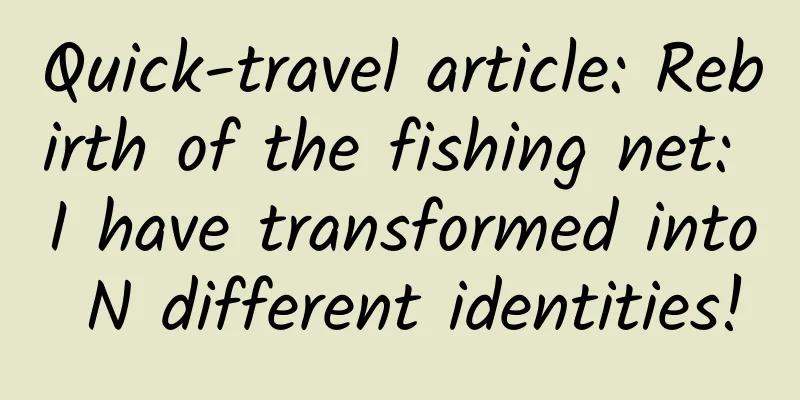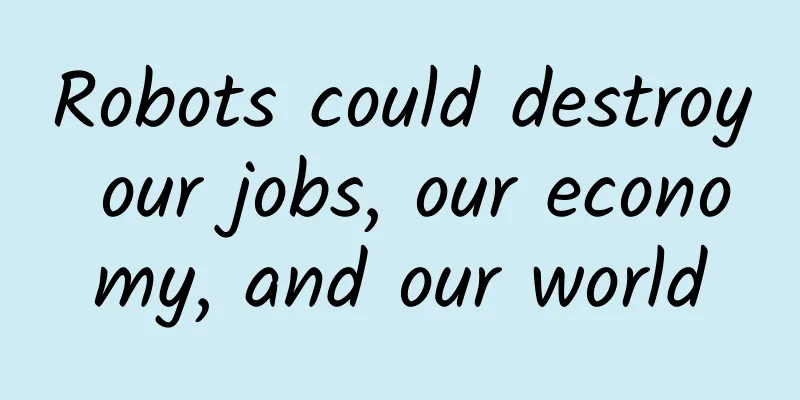Quick-travel article: Rebirth of the fishing net: I have transformed into N different identities!

|
Thousands of sea turtles die every year from being entangled in abandoned fishing nets . Sea turtle entangled in fishing nets | Documentary short film "Abandoned fishing nets pose a big risk" Mr. Lin from Tanmen, Hainan, has been fishing for more than 30 years. He said this is because sea turtles have no brains - the locals will call someone a sea turtle when they insult them, because sea turtles have no brains and are not aware of their surroundings. After decades of fishing, Lin Bo is now a patrolman | Documentary short film "Abandoned fishing nets are a big risk" In fact, sea turtles are not brainless, they just regard abandoned fishing nets as their home . Because of the movement of ocean currents, abandoned fishing nets and other plastic debris gather in the ocean, forming floating "traps". Sea turtles like to make their homes on floating objects and forage for food in nearby areas. Abandoned fishing nets, fishing gear and other marine debris become their food, and even become "homes" that entangle them to death. It is estimated that more than 640,000 tons of fishing gear are lost or abandoned in the ocean every year , accounting for one-tenth of the total amount of plastic waste that flows into the ocean each year, becoming the terrible " ghost fishing nets ". Some of the fishing nets break down into microplastics with a diameter of less than 5 mm, which are swallowed by animals and enter the food chain and are eventually eaten by humans. Most of the abandoned fishing nets will float in the ocean or entangled in reefs on the seabed, resulting in the death of more than 130,000 large marine creatures each year. Many marine mammals and reptiles, from green turtles to humpback whales, have been deeply affected. An ocean full of plastic waste | Documentary short film "Abandoned fishing nets pose a big risk" Why are there so many fishing nets in the ocean? Why are they not recycled? How can we save these marine creatures? The answers are actually in our daily lives. Why are there so many fishing nets in the sea? Limbo has witnessed the growing problem of abandoned fishing gear. The fishing nets used by his grandfather's generation were still made of hemp, which was easy to rot and had poor toughness, but could be degraded in the ocean. By the time Lin Bo went out to sea, fishing nets were already made of plastic - strong and durable, greatly improving the efficiency of fishing, but fishing nets could not be degraded and would remain in the ocean for hundreds of years. These abandoned fishing gears may be lost accidentally or discarded by fishermen because they are damaged. More and more fishing gears are floating in the sea, like ghosts, either trapping living animals or being eaten by animals and stored in their stomachs. Not only animals in the sea, but also birds on the shore are suffering|Pixabay In addition to the ecological harm, the damage caused by abandoned fishing nets to the fishery economy cannot be underestimated - these abandoned fishing nets will capture many economically valuable fish, causing the fishermen's catch to gradually decrease , directly affecting the livelihoods of coastal fishermen. Among the many "ghost fishing nets", gillnets are one of the main sources. Gillnets are a net hung vertically in the water, like an invisible "wall of death". When fish touch the net, their fins or gill covers will be entangled in the net and they cannot escape. Among the different types of gillnets, drift gillnets that float in the sea are particularly likely to become ghost nets . They are often lost due to current conditions and improper management. Fishing boats once linked together drift nets up to 60 kilometers in length. It was not until 1991 that the United Nations banned the use of drift nets longer than 2.5 kilometers on the high seas. Drift nets also easily catch non-target species, such as seabirds, turtles, and porpoises. Trawl nets also have a significant impact on the marine ecology, especially bottom trawl nets. Fishermen will sink bottom trawl nets to the seabed and drag them. The seabed swept by them may not recover for decades. Because they are in direct contact with the seabed, bottom trawl nets often encounter rocks and other obstacles. In addition, they are subject to great forces when catching a large number of fish, making them easily damaged. Whether it is a gillnet, trawl or purse seine, these ghost nets left in the ocean have become a global problem . Ghost nets account for 46% of the Great Pacific Garbage Patch (an area of about 1.6 million square kilometers) and 10% of all marine garbage. In the northeast Atlantic, 25,000 fishing nets are discarded every year, with a total length of up to 1,250 kilometers. Even in the sparsely populated Arctic, there have been incidents of polar bears being trapped in fishing nets. Polar bear rescued from fishing nets | USGS A hundred possibilities of fishing nets In fact, abandoned fishing nets are not just garbage . The materials of fishing nets mainly include nylon, polypropylene, polyethylene, etc., which are what we usually call plastics. If abandoned fishing nets can enter the recycling channel, they can be recycled and turned into various things in life. WildAid is a non-profit environmental organization whose marine projects have helped more than 8,500 marine species. They recently shot a short film, "The Big Risk of Abandoned Fishing Nets," focusing on the recycling and remaking of fishing nets . Many companies at home and abroad are trying this approach of turning waste into treasure. Clothes and hats After recycling discarded fishing nets, they can be spun into nylon yarn after washing and shredding. Nylon is the raw material for many man-made fibers, and we can find nylon in our daily clothes, hats, woven bags, etc. At present, many companies are remaking discarded fishing nets into textiles, such as the domestic recycled materials company InResST mentioned in the video. They recycle fishing nets from fishermen, classify them according to materials, quality, color, moisture content and other indicators, and then put them into equipment for cleaning, crushing and making granules. These granules will be sent to spinning mills, re-spun into yarn, and made into textiles such as clothes and hats . In the recycling shops in Jiangsu alone, InResST can recycle 2,000 to 3,000 tons of fishing nets a year, which shows the amount of discarded fishing nets. Fishing nets in the Inreit warehouse | WildAid Jacket, sunglasses, surf fins Similarly, outdoor brand Patagonia has launched products made from recycled fishing nets. Their partner Bureo works directly with local fishermen in South America to sort, clean and crush the recycled discarded fishing nets, and then make a material called NetPlus. Now, NetPlus has been used to make a series of Patagonia products, such as hat brims, jackets, sunglasses and surf fins . Recycling abandoned fishing nets from South America | Patagonia shoe Fishing nets are also suitable for making shoes. Adidas teamed up with Parley for the Oceans in 2017 to launch a pair of shoes made of fishing nets . This eco-friendly shoe is made of 95% recycled fishing nets and 5% polyester fibers. The fishing nets used are recycled in the Maldives, and each pair of shoes contains recycled plastic equivalent to 11 plastic bottles. Shoes made from fishing nets | adidas carpet In addition to being made into clothing, nylon yarn made from recycled fishing nets can also be used to make carpets . Net-Works, an American company, collects discarded fishing nets and sends them to textile companies, which turn them into yarn and sell them to Interface to make carpet tiles. | diveoclock Plastic bottles, cosmetic containers A startup from Poland is trying to produce plastic bottles from recycled fishing nets. They recycle high-strength polyethylene fishing nets, clean them, cut them, grind them and dry them to obtain raw materials for making plastic containers. Plastic bottles made from recycled fishing nets|glassandco How many steps does it take to get from a fishing net to a hat? However, although there have been many attempts to recycle discarded fishing nets, the implementation process is still fraught with difficulties. The first step in recycling fishing nets is for fishermen to bring their nets back to shore on their own initiative , or even collect discarded fishing nets they encounter while out at sea. This cannot be accomplished through propaganda alone, but requires real benefits - only when the fishing nets brought ashore can be exchanged for money, will fishermen be motivated to bring more fishing nets ashore. For the fishing nets brought up, the fishermen will give priority to selecting those that are still usable for reuse , and only the remaining damaged nets will be sold to recycling agencies. Uncle Lin is collecting abandoned fishing nets | Documentary short film "Abandoned fishing nets are a big risk" Different materials of discarded fishing nets have different recycling prices. White nylon fishing nets have a high recycling value, with a recycling price of 7,000 to 10,000 yuan per ton. However, polypropylene and polyethylene fishing nets have a relatively low value, generally 3,000 to 6,000 yuan per ton, and the recycling cost is even higher than the value of the material itself . In order for the entire recycling system to operate smoothly, economic benefits are essential . After recycling fishing nets, many manufacturers choose to make them into textiles, such as the carpets, shoes, hats, etc. mentioned above. Hu Pengyan, co-founder of Inruit, told us that textile materials can increase the added value of products and have higher economic benefits . His company will also recycle fishing net materials that lack economic value, and use the high returns from textiles to make up for this part of the loss: "Processing fishing nets with recycling value can keep the company running; the next stage will have a better ability to process fishing nets that are difficult to recycle and have low recycling value." Hu Pengyan, co-founder of Inruit | Documentary short film "The Big "Hat" Risk of Abandoned Fishing Nets" Fortunately, in recent years, more and more fishermen have joined the ranks of recycling fishing nets. The Tanmen fisherman Lin Bo mentioned above, his father and grandfather were both fishermen, and he himself has been fishing for more than 30 years. But after retiring, he became a patrolman in 2021. He patrols the beach of Tanmen Port every morning, picking up broken fishing nets and garbage . When he meets fishermen, he will also persuade them to bring back their fishing nets and not throw them into the sea. Every morning at six o'clock, Uncle Lin patrols Tanmen Port and picks up garbage | Documentary short film "Abandoned fishing nets are a big "hat" danger" The ocean provides us with abundant food and magnificent landscapes, and is an important ecological component of our blue planet. Whether it is the issue of abandoned fishing nets and plastic waste, or the health of the marine ecosystem, it deserves our greater attention and participation. Without the ocean, we would have nothing | Documentary short film "The Big Danger of Abandoned Fishing Nets" As ordinary people, we can also choose to do what we can to protect the ocean - if conditions permit, we can participate in fishing net recycling activities in local coastal communities, pay attention to and choose clothing, shoes and hats made of recycled materials when consuming, or directly donate to the abandoned fishing net charity project. There is still hope for our oceans to regain vitality. Author: Small Towel Editor: Mai Mai This article comes from GuokrNature (ID: GuokrNature) |
>>: One reason is enough to persuade you to eat more taro!
Recommend
4 key points for high-quality community operations!
If you are interested in community operations , p...
How much does it cost to customize the Chengde Paper Products Mini Program? What is the price quote for Chengde Paper Products Mini Program customization?
The main factors affecting the price of mini prog...
The hottest June since 1961 has just passed! Fierce high temperatures are coming across the country again
It’s too hot! You’ve witnessed history this June ...
Five-step optimization of APP promotion channel effects to make the purchased traffic worthwhile!
How to make refined use of the traffic during the...
Let Montenegro be "green" and "heal" the mines. The environmental protection cloud tour shows the results of ecological restoration
The 15th meeting of the Conference of the Parties...
Android four major component application series - realize phone call interception and phone call recording
[[152918]] Use BordercastReceiver and Service com...
How to write a short video script? These templates can be applied directly!
Although a short video is only 60 seconds long, e...
5 major trends in brand marketing in 2021
Among the top ten popular slogans, Yuanfudao (A t...
Analysis of Dianping's Membership Operation System
The analysis ideas of this article are: We will d...
Ivy League Daddy "Fun Chess Thinking Course L2 Chess Advanced Course"
Ivy League Daddy's "Fun Chess Thinking C...
24 sets of mobile photography courses collection
24 sets of mobile photography series course colle...
Harmful substances appear! Many people in Japan have excessive levels of organic fluorine compounds!
Audit expert: Gan Qiang Lecturer at Beijing Insti...
Sichuan Mustang won the lawsuit against Ford Mustang and changed its name to "Mustang"?
In February 2016, Sichuan Mustang Automobile Co.,...
Brother Yong's "Self-media Lonely Nine Swords Series Course" covers new media traffic monetization, traffic diversion and fan marketing
Introduction to training course content: The cours...
Battle and coexistence between humans and viruses | Science Gallery
A global virus pandemic has almost overturned peo...









